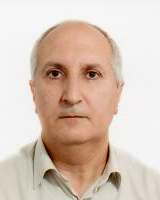Degree: Doctor
Affiliation(s):
FCUP
Bio
Carlos Manuel de Melo Pereira is an Associate Professor at the University of Porto Faculty of Sciences. Published 146 articles in specialized journals 5 book chapters. Works in the area(s) of Exact Sciences with an emphasis on Chemistry, Electrochemistry and Sensors. In your Ciência Vitae curriculum, the most frequent terms in the context of scientific, technological and artistic-cultural production are: Supercapacitors; Carbon Nanomaterials; Ionic Liquids; Energy storage; Nanopesticides; Environmental Safety; Cytotoxicity; Ecotoxicity; food allergens; new processing technologies; new foods; food security; Aquaculture; Recirculation systems; Organic matter; Water treatment; analogues to ionic liquids; Tin alloys; nanostructured materials; low eutectic solvents; ionic liquid; choline chloride; nanostructured films; electrochemistry; Chemical sensors; Optical fiber interferometry; Water quality; catecholamines; biosensors; microsensors; neurotransmitters; DNA; nanoparticles; layer-by-layer assembly
Publications
Showing 5 latest publications. Total publications: 198
Show all publicationsArticle, Indexed in: crossref, scopus, wos DOI: 10.3390/environments11010006
 P-00Y-KGJ
P-00Y-KGJ
Article in Press, Indexed in: crossref, scopus, unpaywall, wos DOI: 10.1002/cssc.202301671
 P-010-M7T
P-010-M7T
Article, Indexed in: crossref, scopus, wos DOI: 10.1016/j.talanta.2023.125284
 P-00Z-8D1
P-00Z-8D1
Article, Indexed in: crossref, scopus, unpaywall, wos DOI: 10.1007/s11368-024-03786-x
 P-010-7PK
P-010-7PK
Article, Indexed in: crossref, scopus, wos DOI: 10.1016/j.biortech.2024.131065
 P-010-NJE
P-010-NJE

